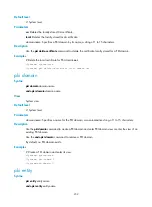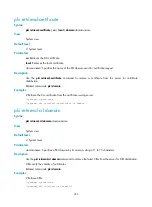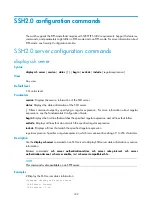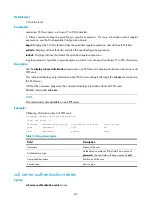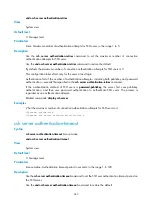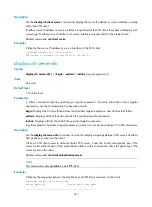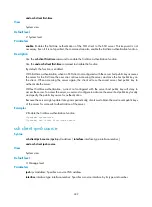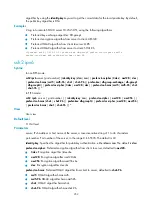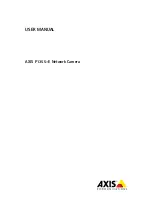
246
Use the
undo ssh
user
command to delete an SSH user.
For a publickey authentication user, you must configure the username and the public key on the device.
For a password authentication user, you can configure the account information on either the device or the
remote authentication server such as a RADIUS server.
If you use the
ssh user
command to configure a public key for a user who has already had a public key,
the new one overwrites the old one.
You can change the authentication method and public key of an SSH user when the user is
communicating with the SSH server. However, your changes take effect only after the user logs out and
logs in again.
If an SCP or SFTP user has been assigned a public key, it is necessary to set a working folder for the user.
The working folder of an SCP or SFTP user depends on the user authentication method. For a user using
only password authentication, the working folder is the AAA authorized one. For a user using only
publickey authentication or using both publickey authentication and password authentication, the
working folder is the one set by using the
ssh user
command.
Related commands:
display ssh user-information
.
Examples
# Create an SSH user named
user1
, setting the service type as
sftp
, the authentication method as
publickey
, the working directory of the SFTP server as
flash:
, and assigning a public key named
key1
to
the user.
<Sysname> system-view
[Sysname] ssh user user1 service-type sftp authentication-type publickey assign publickey
key1 work-directory flash:
SSH2.0 client configuration commands
display ssh client source
Syntax
display ssh client source
[
|
{
begin
|
exclude
|
include
}
regular-expression
]
View
Any view
Default level
1: Monitor level
Parameters
|
: Filters command output by specifying a regular expression. For more information about regular
expressions, see the
Fundamentals Configuration Guide
.
begin
: Displays the first line that matches the specified regular expression and all lines that follow.
exclude
: Displays all lines that do not match the specified regular expression.
include
: Displays all lines that match the specified regular expression.
regular-expression
: Specifies a regular expression, which is a case-sensitive string of 1 to 256 characters.

